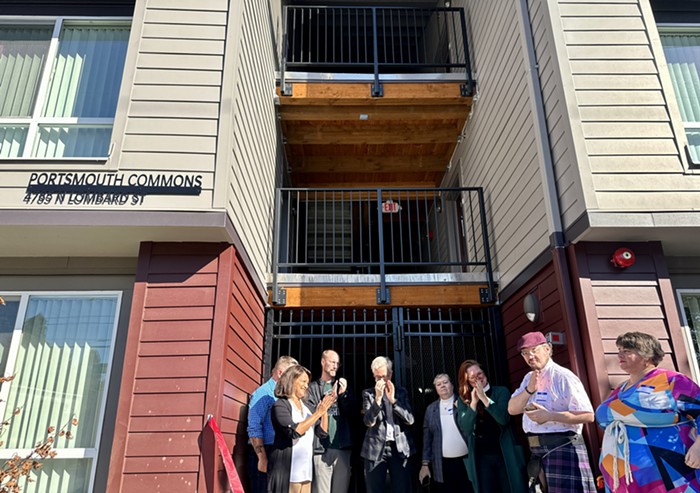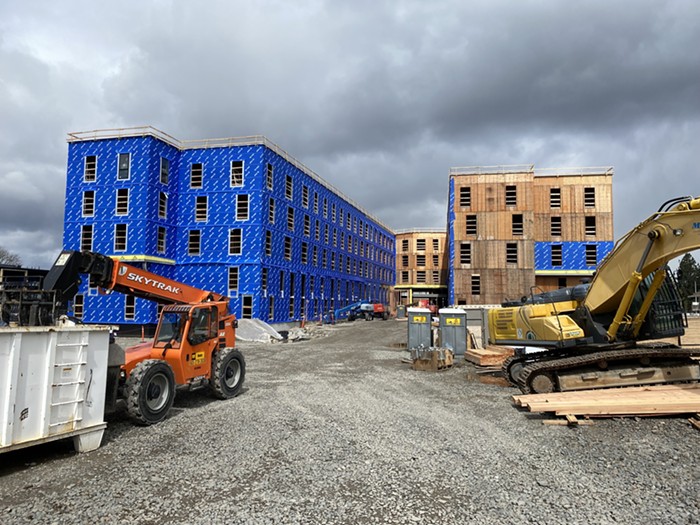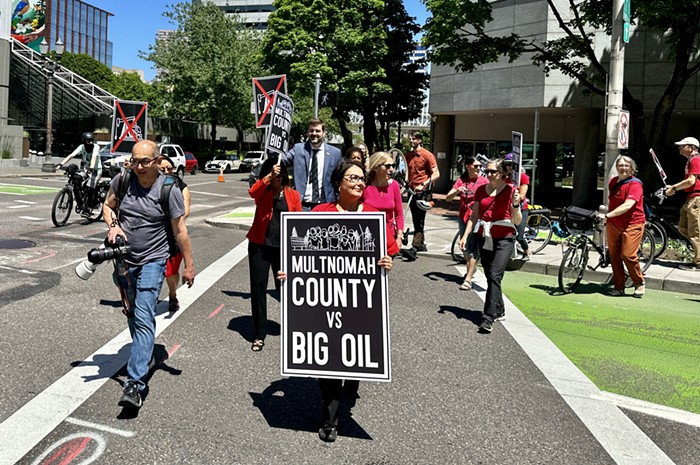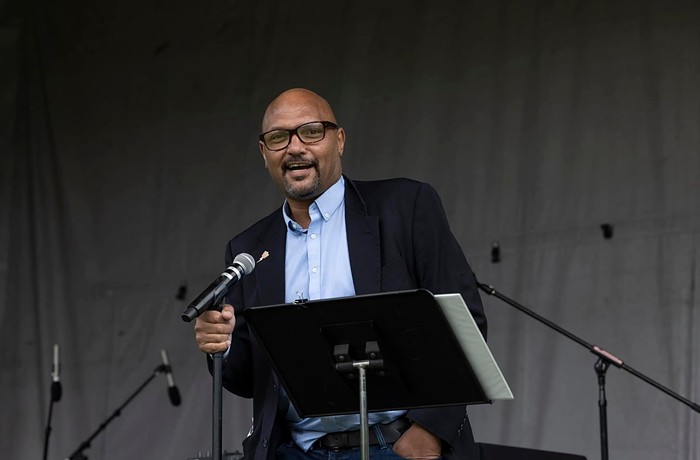IT'S BEEN nearly a year since Portland voters approved a housing bond. Now the city might finally have a notion of how to spend it.
A week after Portland City Council formally extended the city’s housing state of emergency by 18 months, the council on Wednesday is scheduled to consider a framework for creating the affordable housing promised by the $258.4 million bond.
The process for crafting these guidelines has seemed anything but urgent, critics say. Despite running on a housing platform—and being gifted hundreds of millions by the bond’s passage—Wheeler’s overseen the acquisition of exactly one building using bond funds.
In February, city council approved the purchase of the Ellington apartments in Northeast Portland, using $37 million in bond money to cover most of the deal (and drawing concern the city was moving too hastily). It’s been quiet ever since.
Today, the mayor says the slow start was partly due to the chaos of getting his office up and running, and partly strategic.
“There were probably some delays we created by virtue of the fact it was a new administration,” Wheeler told the Mercury last week. “We were trying to figure out where the bathroom was and everything else.”
But Wheeler also pushes back on criticisms—voiced by people like former Housing Commissioner Dan Saltzman—that the city should be building “as many units as we can as quickly as we can.”
The mayor says he was initially of the same “build, baby, build” philosophy, but has since concluded that thoughtfully creating quality housing, and pushing more expensive units for families, is the way to go.
The guidelines council will consider this week finally position Portland to act quickly, Wheeler says.
So what’s the framework say [PDF]? Here’s a rundown.
The Numbers Haven’t Changed
When voters approved the housing bond, they did so with the promise that their tax dollars would create or preserve at least 1,300 units of city-owned affordable housing. That target was presented as a floor, with advocates suggesting the money would likely result in more units than that (Portland needs around 24,000 more affordable units).
But the city’s framework leaves the 1,300-unit benchmark in place. Under the guidelines, nearly half of the units will be deeply affordable—that is, accessible to people making 30 percent or less of the city’s median family income (MFI), which equates to $20,190 a year for a family of three. The remainder will be targeted to people making a maximum of 60 percent of the MFI.
But There Are (Expensive) New Goals, Too
Lately, City Hall’s all about “permanent supportive housing”—units that come with extremely cheap rents and intensive social services, and are meant for chronically homeless people.
The focus has found its way into the bond plan via a relatively recent addition that sets a target of 300 units of permanent supportive housing. (400 units total are aimed at homeless Portlanders).
That provision comes as Portland City Council prepares to push the creation of 2,000 new supportive housing units in the next decade. A growing number of officials argue it’s the most sensible path to getting people with profound challenges off the streets.
But it also comes with a price tag. The PHB says the intensive services that accompany supportive housing cost between $5,000 and $15,000 per unit every year. That means annual costs of $1.5 million to $4.5 million if it hits the target in its bond framework.
None of that will come from the housing bond. It can’t—bond money is tightly constrained. Officials haven’t been shy about suggesting that a new tax will likely be required. (Wheeler has floated a number of revenue options, but said last Friday he opposes a property tax.)
“Our ability to deliver 300 bond-funded units for people needing Supportive Housing hinges upon a long term commitment for the services as there is insufficient cash flow given the extremely low incomes of the residents,” says PHB Director Kurt Creager.
Communities of Color Have Priority— Whatever That Means
The plan seeks to address systemic racism by prioritizing communities of color—a decision that has roots in city data showing there are no longer any neighborhoods in Portland where the average Latino, Black, or Native American household can afford to rent or own a home.
Other “priority communities” set forth in the framework include families with children, immigrants and refugees, seniors, people with criminal backgrounds, and domestic violence survivors, among others.
But officials and members of the group that developed the framework acknowledge this so-called “priority” doesn’t necessarily amount to much. Under the Fair Housing Act, officials can’t pick tenants based on race, national origin, or any of those other characteristics.
Priority probably comes down to how officials conduct outreach about new housing developments—a method that might help, but can’t ensure these populations get units.
It’s Supposed to Create Units All Over Town
The city’s framework says the PHB must “strive” to create affordable units throughout the city—meaning officials aren’t supposed to only focus on cheaper properties on Portland’s fringes. But the plan also includes conflicting priorities that give leeway for officials to pursue opportunities anywhere they find them.
On one hand, the framework says PHB should focus on neighborhoods where displacement and gentrification are likely to emerge. On the other, it says the city should find projects in “high-opportunity” areas flush with amenities—in other words, areas that might have already been gentrified.
The push and pull between these two options was a point of contention for the group that created the framework, according to participants. Among those concerned about the wording is the Welcome Home Coalition, which played a leading role in pushing the housing bond.
The group suggested in a September letter that officials should set a hard percentage of units that will be developed in high-opportunity areas. The coalition noted, “It will be easier and cheaper to build in the outskirts of the city, where [communities of color] are currently living, and it would be easy to spend all the bond funds in those areas.”
















